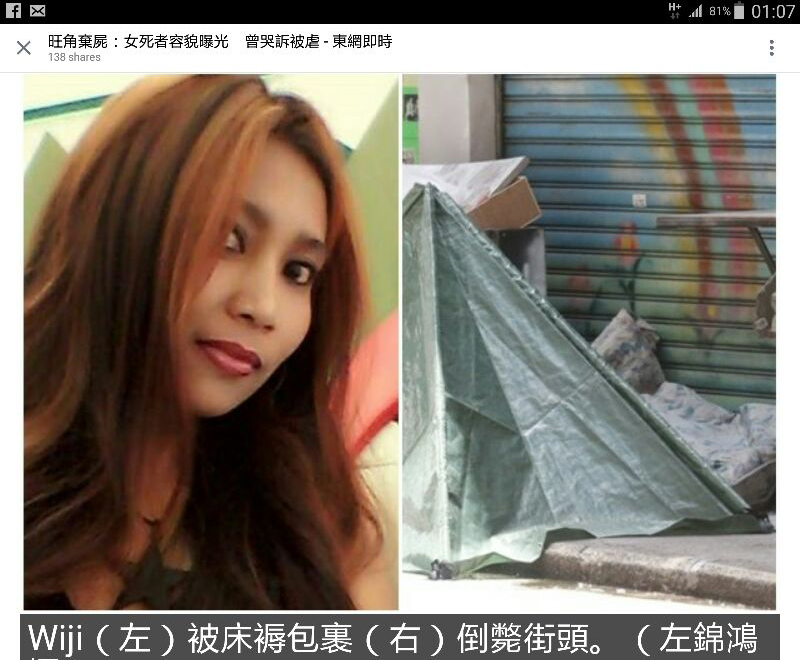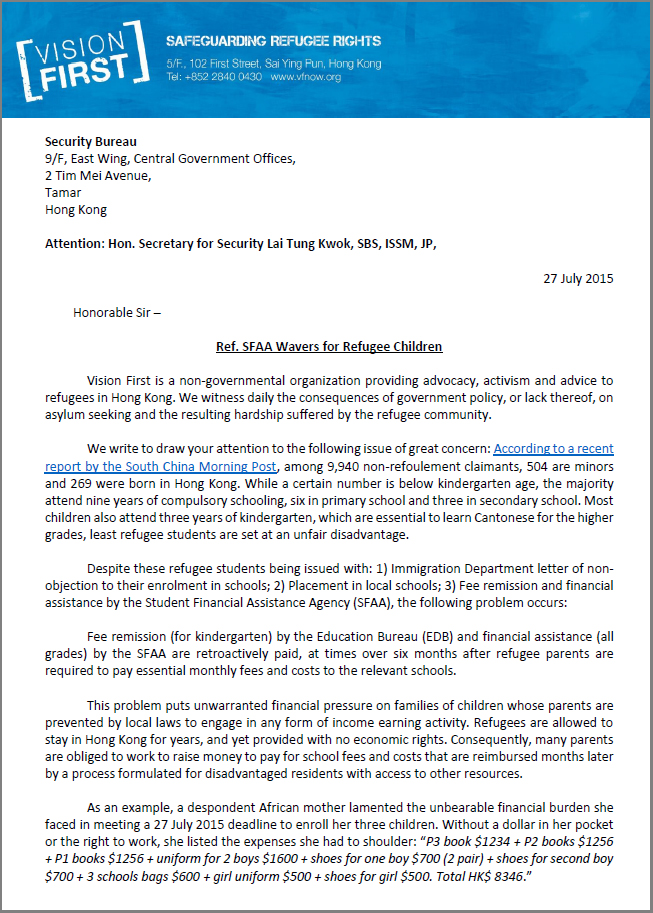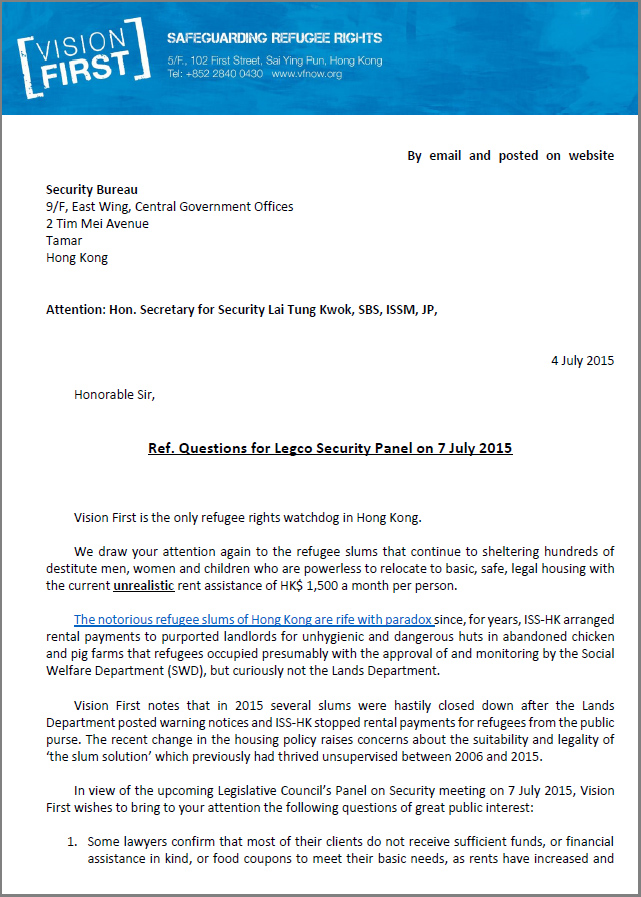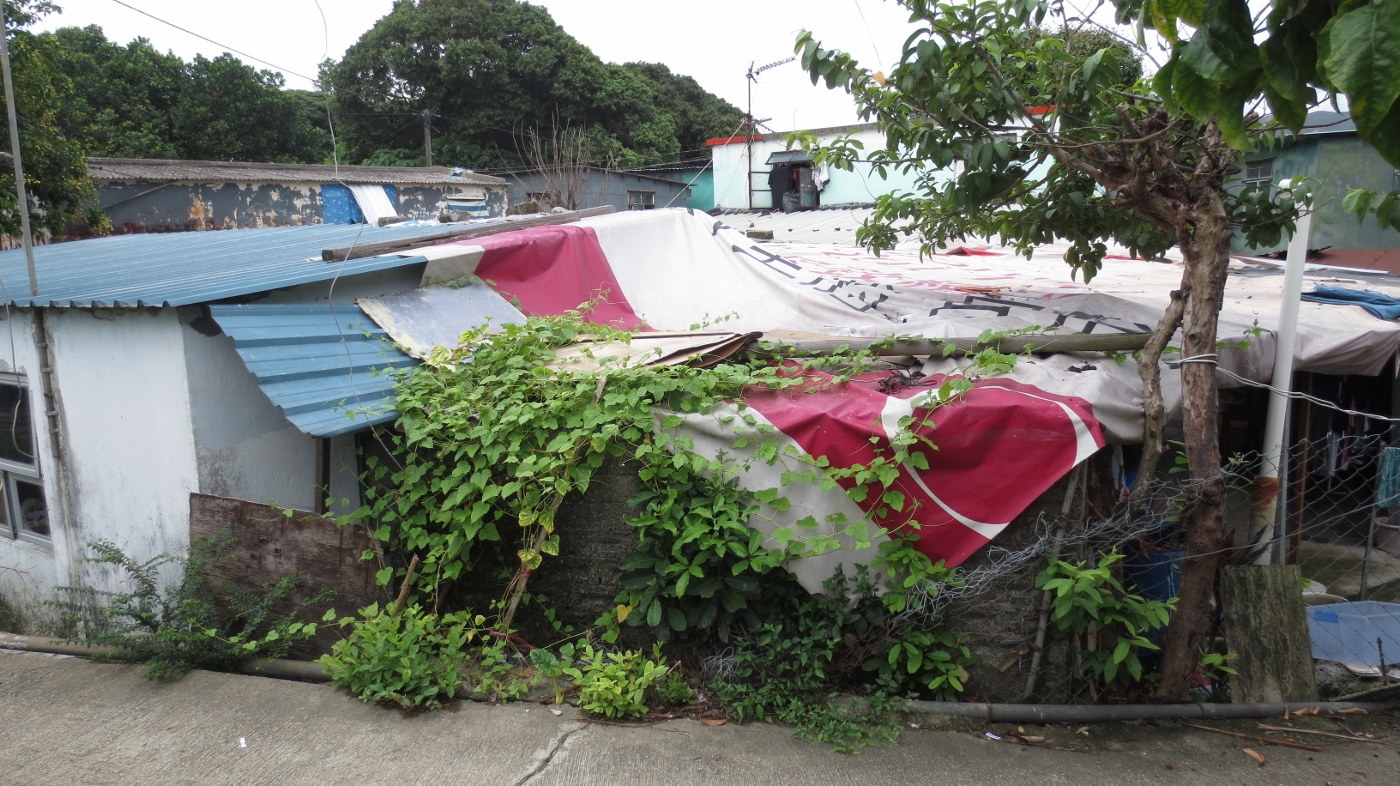Enrollment deadlines force refugee parents to struggle
Jul 16th, 2015 | Personal Experiences, Schooling, VF Opinion | Comment
Financial stress surges in July for refugee parents forced to meet school enrollment deadlines for their children. An African mother explains her predicament, “Hong Kong says it provides an education for refugee children, but it’s misleading. If they said, ‘Here is the school, here are the books and uniform, go to school’, then it would be true. But we must find thousands of dollars or our children stay home.”
This mother was recognized as a refugee in Hong Kong, which makes no difference in the clash with the bureaucratic mindset of Hong Kong Government. Last year, Abby (not her real name) only had two of three children in school because she was unable to raise enough money. “I home-schooled my youngest daughter because the donor offered only enough for two”.
According to a recent report by the South China Morning Post, among 9,940 individuals seeking asylum in Hong Kong, 504 are minors and 269 were born in Hong Kong. While an unknown number is below kindergarten age, the majority must attend nine years of compulsory schooling, six in primary school and three in junior secondary school. Most also attend 3 years of kindergarten which is essential to learn Cantonese for the higher grades.
With pressure to raise money in a hurry, Abby approached the UNHCR for a US$ 1,000 advance to pay for school books, uniform, shoes and enrolment fees required by the primary school. Despite a worldwide annual budget of US$ 5.3 billion, the United Nations refugee agency turned the desperate mother away empty handed. No effort was made to introduce her to a private donor either.
“Only mothers know how much they suffer for their children,” Abby remarked, “I have to give them education, but I cannot work and I have no money. I went to several charities and they said they cannot help. What am I supposed to do?”
Between July and December, refugee parents desperately need to raise money to pay for school costs (including tuition fees for kindergartens) that will be refunded in December or January by the Student Financial Assistance Agency (SFAA). The parents are not begging for donations, but for bridging loans essentially guaranteed by the SFAA, as refunds may be made to donors’ accounts. The reason for this delay is questionable. It is a huge challenge to find donors. The process again raises doubts about policies that influence refugees’ mental health and enforce precarious livelihoods.
It is indeed unreasonable that the parents of refugee children are subjected to the annual (demeaning) routine of begging for cash to comply with the Education Bureau’s payment policies. Vision First urges the government to have SFAA liaise directly with the school to either release the funds upon enrollment in July, or issue wavers for approved refugee students. Similar arrangements are made by the Hospital Authority that does not require refugee to prepay medical costs.
Residents might find it acceptable to collect SFAA grants 4 to 5 months after school starts, but it is unfair for refugee parents who are prohibited from working, receive insufficient welfare assistance and cannot avail themselves of support from wider family, social and charitable networks.
If education is the right of every child, irrespective of immigration status, then Hong Kong Government should refrain from turning it into another deterrent mechanism that “drives refugees crazy”, as Abby put it.
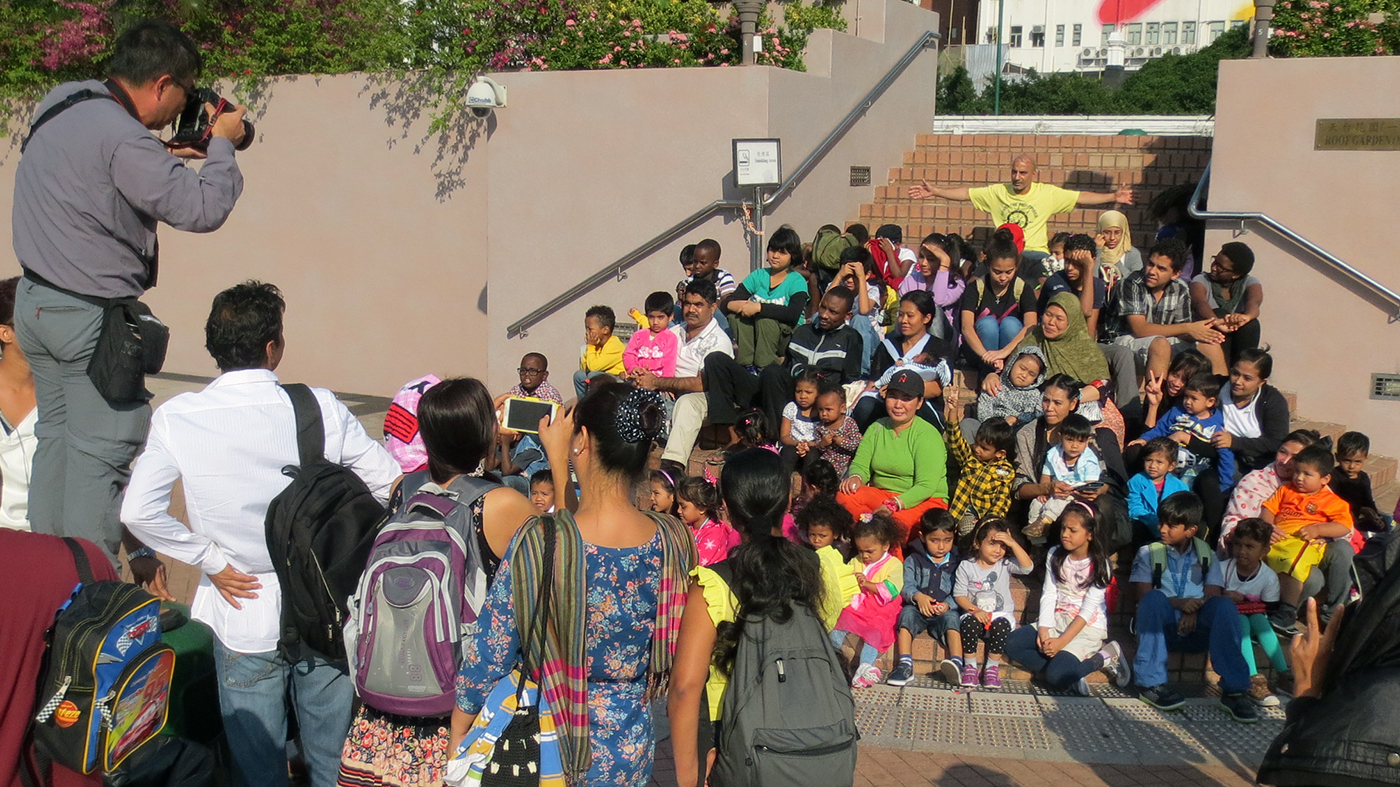
Eliminating violence in the securitization of refugee welfare
Jul 15th, 2015 | Advocacy, Crime, VF Opinion, Welfare | Comment
Vision First reported the case of a refugees in a wheelchair allegedly assaulted outside the premises of the service provider for refugees. While perhaps an isolated case, it nonetheless raises disturbing questions about the unfortunate securitization of refugee services.
First, “I came to Hong Kong as a victim of violence and here I suffer violence again,” sighed this distraught refugee as he reported being roughed up by security guards. A question may be raised as to the need for such a visible display of uniformed security guards in a setting where ‘humanitarian’ services are offered to people whose motivation for fleeing abroad relates to similar displays of an ostensible monopoly of violence. This refugee’s words brings to light the harsh confinement, subjugation and control of an underclass of 10,000 refugees, as well as what appears to be an inadequate understanding of refugee vulnerability.
Second, such an episode brings to light again questions about inadequate assistance. This refugee suffers medical conditions deemed worsened by his accommodation. And yet alternatives were not promptly offered. Behind the confrontations between case workers and refugees, behind the arguments over low assistance and high rent, and behind the swelling hatred stoked by the Hong Kong Government’s ‘humanitarian assistance’ lies the root of the problem.
Third, most evidently, if the refugee had indeed been given an appointment, why was he denied entry for hours? A structural dysfunctionality seems to exists on which Dr. Martin Luther King’s universal observation – interestingly written from inside a prison cell – may shed some light: “An unjust law is a code that a numerical or power majority group compels a minority group to obey, but does not make binding on itself. This is difference made legal.”
A refugee advocate interpreted such injustice, “I was told to find a room for 1500$, but my case officer knows it is impossible. If it were possible, why doesn’t he find it for me?” Arguably, the distribution of humanitarian assistance achieves the exact opposite of its stated objective. While it does little to prevent destitution, it dehumanizingly labels refugees as a burdensome, problematic and overly-demanding group that fails to appreciate the compassionate assistance and ostensible effort put in their care.
Faced by daily displays of emotional refugees, even security guards may lose the little empathy they had, addressing everyone with unsympathetic indifference, as tempers reach boiling point. An outspoken refugee who witnessed the wheelchair incident revealed that “The police had arrived. He was restrained and placed on the wheelchair. It was embarrassing to be a refugee. Anyone outside would see him and say ‘Refugees are crazy!’”
Fourth, it appears obvious that overly dehumanizing conditions can be either interiorized or resisted by refugees. A refugee advocate explained, “We should find a smarter way to solve our problems without giving people the opportunity to think that refugees are crazy. As refugees we should do something smart, something beautiful. Any injustice is an injustice, but it is also an opportunity for us to show it to the public.”
His words carried wisdom gained through years of imposed hardship, “We have to cure the disease, not cure the symptoms.” Focus ought to be drawn on the general context, rather than the outcome of individual behaviour, whether it is restrained and submissive, or not.
Vision First vigorously wages non-violence against social injustice, especially when sanctioned by state power in the unjust oppression of the most vulnerable in society, irrespective of immigration status.
An onerous corollary is our duty to expose and eliminate any form of violence in what, as a fifth point, can be said to emerge as the ongoing securitization of refugee welfare, manifested in the slums, food distribution, detention, criminal prosecutions, and manhandling of refugees.
Lastly, would Social Welfare Department staff shoved and pushed protesting refugees? Would the SWD condone such unwarranted conduct by its own security guards?
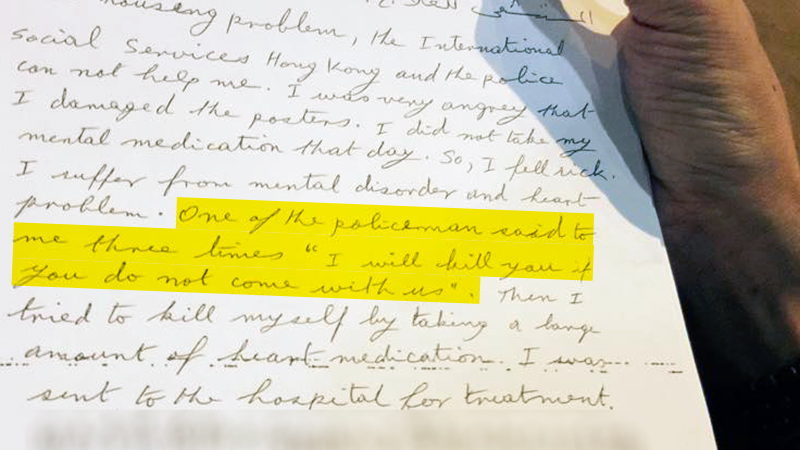
Misinformation raises hysteria around refugee abuse
Jul 8th, 2015 | Immigration, Rejection, VF Opinion | Comment
The Legislative Council Security Panel meeting of 7 July 2015 failed to shed light on the structural problems that have drawn criticism to the Unified Screening Mechanism (USM) and its questionable 0.5% acceptance rate. The Security Bureau report that “amongst the 1873 non-refoulement claims determined by Immigration, 8 are substantiated”, figures that were sensationally echoed in the Chinese press as “99.5% of non-refoulement claimants are false”. Is that really the truth?
Vision First introduced the discussion on acceptance rates in 2012, when we first questioned the credibility of the Immigration Department’s effective Zero Percent Acceptance Rate that not only fails to protect persecuted foreigners, but is manipulated to brand refugees as abusers who should be expeditiously deported. Statistics however are only useful if provided with context and analysis.
A case in point is the period refugees wait for decisions – namely rejection. The Security Bureau reported that “since the commencement of USM, it takes Immigration about 25 weeks on average to decide on a claim”. However such an average is limited to the 1873 cases already determined. It does not include hundreds of refugees who arrived many years ago and, either have not been screened, or still await first-tier or second-tier determinations.
Vision First is aware of numerous refugees whose Torture Claims, in some cases filed years before the USM was launched, were not decided. The authorities have suggested that they may request prioritized screening, but what incentive do they have with a 99.5% certainty of being refused and then facing removal into harm’s way? Is it possible that Immigration avoids determining cases that are hard to refuse and might then cause embarrassment through judicial reviews? Some of these refugees have waited more than a decade.
It is certainly staggering that since the USM was launched in March 2014, a record 6461 new claims were lodged, a 250% increase on the previous year. The figure is greater than the entire refugee population was in early 2014 and might be indicative of Hong Kong’s growing status as a global city that attracts persecution, labour and poverty-induced migration. Hong Kong is apparently unable to categorize and manage them all effectively.
An analysis of the recent surge is beyond our scope. One might however consider the fact that Hong Kong has no temporary migration scheme for troubled foreigners, who don’t fit the definition of refugees, but are nonetheless fearfully reluctant to return home for a combination of reasons that may include debt, harassment, destitution and persecution. The predictable fallout from the city’s exploitation of 350,000 domestic workers should also draw attentive scrutiny.
Other issues are raised by the 43% of claimants (4250) who entered Hong Kong illegally. While the way of entry has no bearing on asylum grounds, the figure underscores border porosity and the resourcefulness of agents in eluding both Hong Kong and Chinese border controls. The problem should be raised as an indictment of immigration capacity, not as evidence of refugee deviance, because the persecuted are entitled to seek asylum through any channels – legal or clandestine.
Finally, the 0.5% acceptance rate may be challenged in relation to Pakistan that represents the top country of origin for refugees seeking sanctuary in Hong Kong (20%). Any cursory internet search reveals that Pakistan suffers appalling human rights violations, as well as violence against religious minorities, women, journalist, activists and underclass ethnic/tribal minorities. The government’s inability to guarantee security and eradicate corruption are further concerns.
Vision First puts forward two sets of data for further consideration and analysis.
Australia acceptance rate of Pakistani refugees:
- in 2012-13 — 80%
- in 2011-12 — 75%
- in 2010-11 — 80%
- in 2009-10 — 84%
- in 2008-09 — 76%
Hong Kong acceptance of Pakistani refugees, since the ratification of the UN Convention against Torture:
- from 1992 till July 2015 — ZERO
QUESTION: Do fake Pakistani refugees avoid Australia to come here, or is the USM fake?
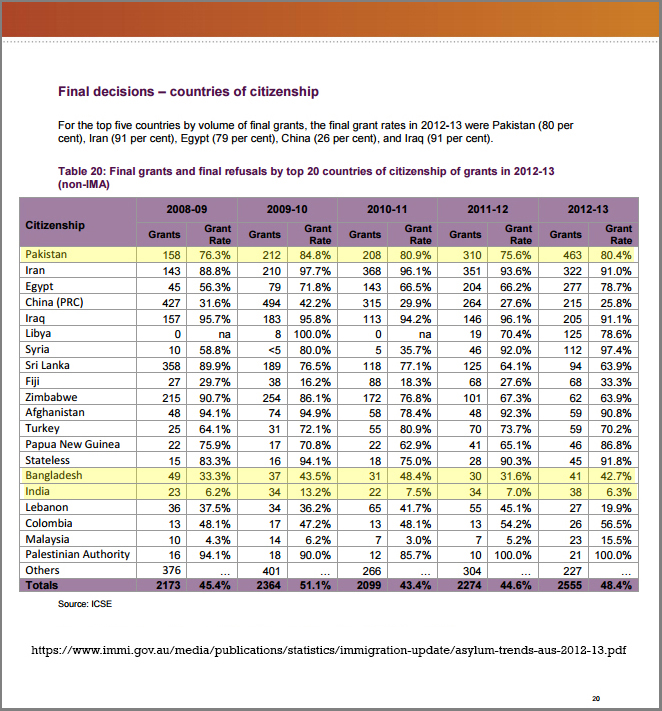
Food coupons: list of excluded items urgently needed
Jul 6th, 2015 | Food, VF Opinion, Welfare | Comment
Refugees are not allowed to purchase certain products with the newly introduced food coupons. On 8 June 2015, the Legislative Council “Panel on Welfare Services” suggested that the Social Welfare Department, or its contractor ISS-HK, produce a detailed list of excluded products. The list would help avoid, or at least minimize, arguments between refugees and cashiers that inconvenience impatient customers at busy check-out counters.
There are plans to expand the coupon network to other supermarkets to increase product variety (including Halal and ethnic choices) and price competitiveness, as the 280 stores operated by Wellcome are not known for the cheapest prices. Meanwhile, cashiers require training and guidelines to reduce the subjective interpretations of the “Terms and Conditions” printed on the back of coupons.
Here is an example of the challenges faced by refugees: a mother shared on the Refugee Union chat, “One of my friend went to Wellcome and wanted to buy milk for her baby and the cashier say that she can’t buy the milk with the coupon. So what is the use of the coupons that we get from ISS if we can’t buy the milk for our babies?” A member updated the group, “After the fight at last she got the milk. I think it depends on the Wellcome staff.” Another offered a thoughtful solution, “We need to present our problems as mothers to the Social Welfare as quickly as possible.”
A Vision First member reported that she had successfully purchased baby formula at several Wellcome stores, until it ran out in her neighbourhood. Babies can be incredibly fussy about what they eat. The mother broadened her search and found the preferred brand at a 24-Hour Wellcome, only to be told that the coupons were not accepted for “baby needs”. After assuring the manager that other branches allowed the purchase, she left with a hungry, screaming infant.
A refugee family traveled to Causeway Bay to shop at a Wellcome store that offered a large variety of fresh vegetable and fruits which their three children could not enjoy under the previous in-kind food distribution. It was evening and the store was especially busy. The cashier was confused and called the manager who inspected each item in the shopping cart: Nutella was removed “because it is chocolate”; chicken fillets were removed “because they are not frozen”; potato chips were removed “because they are snacks”; vinegar was removed “because it contains alcohol” …
The mother and children were embarrassed by the protracted and fastidious inspection executed under the intrusive stare of a growing queue of annoyed customers. The husband was downright offended. He was insulted by the examination, yet had no recourse against such degrading treatment if he wanted to collect groceries for his family. He vowed never to return, which was probably of little consolation.
Are food coupons and the absurd policing of shopping cart meant to introduce a new form of humiliation that refugees must submissively endure to remain in our city? It has been reported that refugees must present all their receipts to caseworkers in order to receive coupons for the following month. What is the point of this practice if Wellcome staff already performs the inspection?
There are many reports of coupon-bearers being denied baby formula, fresh milk, non-frozen meats, as well as sweet and savory goods that could be classified as ‘snacks’. No wonder the trading of food coupons is already underway, selling for about half face value to the same astute middlemen who previously profited from emergency rations and now trade in valuable coupons.
Vision First urges authorities to scrap the products ban, or at the very least to promptly publish the list of excluded items, as the terms and conditions carried by the food coupons remain open to interpretation.
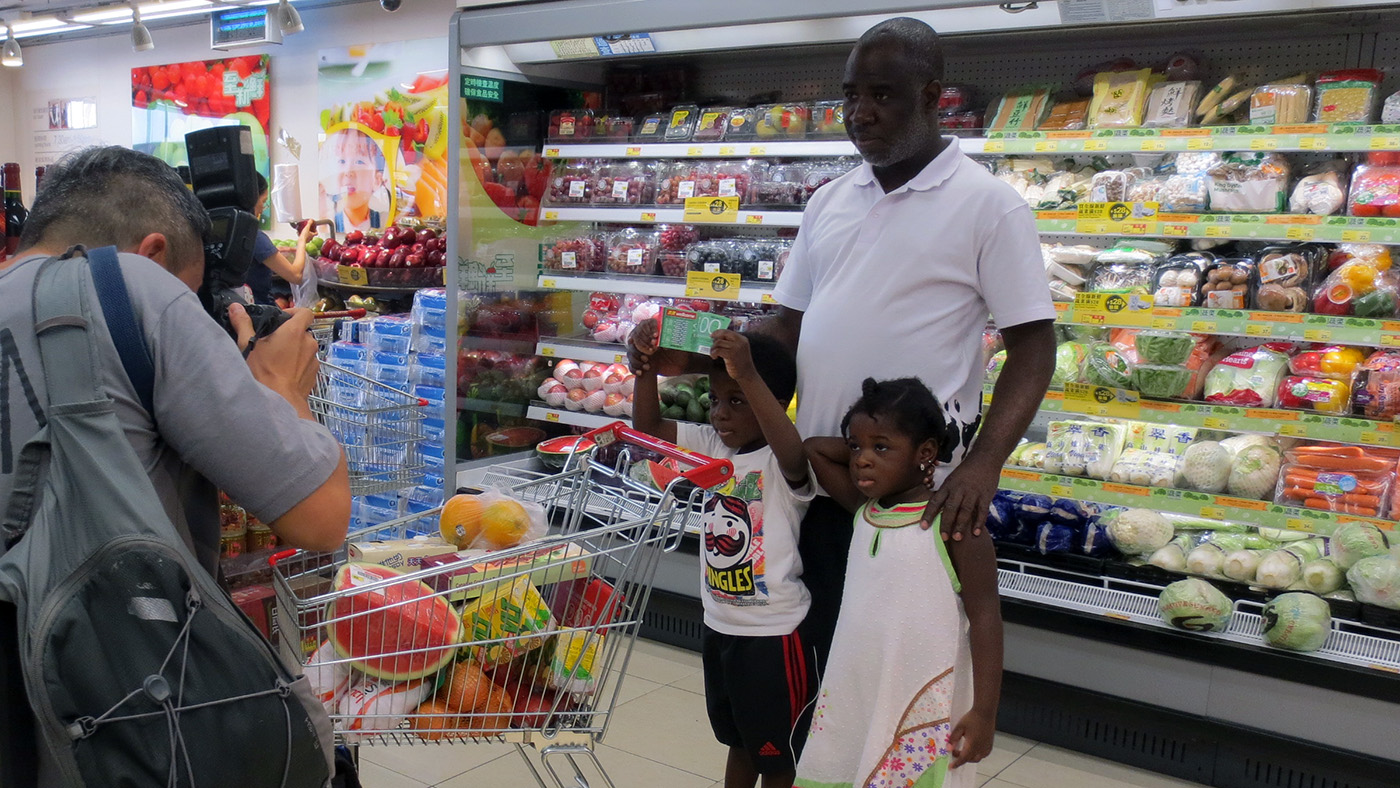
Open letter to the Security Bureau for the Legco Security Panel on 7 July 2015
Jul 4th, 2015 | Advocacy, Government, Housing, Immigration, Rejection, VF Opinion | Comment
USM is a mechanism of border control not refugee protection
Jul 2nd, 2015 | Advocacy, Immigration, Rejection, VF Opinion | Comment
In view of the very low acceptance rate of the Unified Screening Mechanism (USM), perhaps it is necessary to rethink the purpose of this mechanism. Vision First suggests that at the Legislative Council’s Panel on Security on 7 July 2015, lawmakers re-examine the implementation of the USM and its usefulness to taxpayer who this year will foot a 644 million dollar bill to operate what refugees dubbed a ‘fake’ scheme.
Given that the Government bluntly refuses to grant asylum and brands refugees as illegal immigrants, what rational and objectives have supported Hong Kong’s asylum process since 1992? The city’s masterminds are too savvy to operate exclusively on the premise of moral obligations towards the international refugee problem, as states are rarely motivated by moral responsibility alone.
The USM seems to be characterized by its migration control function, rather than the Government’s international duty to safeguard persecuted foreigners. Like its predecessors, the USM does not offer sanctuary. Rather it exerts state power to confine, control and ultimately expel an unwanted migrant population.
Government propaganda successfully homogenized refugees with economic migrants, illegal immigrants and travelling outcasts stigmatized as a risk to Hong Kong’s security and affluence. Within this self-serving masterplan, the USM is deployed as a MECHANISM OF BORDER CONTROL to relentlessly banish asylum seekers, stateless persons, failed (often pregnant) domestic workers, economic migrants and other misfits perceived as a nuisance after a few years of exploitation.
The Government is less than sincere about even granting non-refoulement protection, or else considerably more than 28 refugees would have been identified and assisted since 1992. Such negligible results indicate that the asylum process has routinely performed the function of rejecting undesirable border-crossers, rather than protecting vulnerable refugees.
Although it is unlikely that pro-establishment lawmakers will question the status quo, and it is improbable that challenges from the opposition will be anything more than noted, Vision First presents a set of questions of public interest for the upcoming Legislative Council’s Panel on Security meeting:
- How many claims were substantiated since the launch of USM? And how many claimants currently enjoy non-refoulement in Hong Kong (including CAT)? Please specify the ratio between substantiated claims and outstanding claims and whether successful cases were Torture, CIDTP or Persecution? (VF bets they were all Persecution to expel them from Hong Kong via the UNHCR)
- When will the USM be amended to include assessment of Bill of Right Art. 2 “Right to Life” claims?
- Why are USM claimants not allowed to work in Hong Kong despite living in destitution?
- What evidence can the Security Bureau provide that allowing asylum seekers to work would lead to a massive influx of new arrivals into Hong Kong?
- Why are USM claimants arrested for working illegally and given longer jail sentences compared with visitors and/or overstayers?
- Some local NGOs claim that the level of welfare assistance given to USM claimants is too low for individuals to subsist, making it necessary for them to work illegally in the city. What’s the Bureau’s response to this claim?
- Some lawyers confirm that most of their clients do not receive sufficient funds, or financial assistance in kind, or food to meet their basic needs as rents have increased and inflation has outstripped what amounts the SWD provides. This leaves them with no choice but to beg and frequently resort to working illegally. Is it not a fact that the increase in rents has outstripped the rental assistance provided to claimants?
- Do you agree that thousands of asylum seekers lived for years, and hundreds continue to live, in abandoned chicken and pig farms sanctioned by the government as these were/are the only locations affordable based on government rent assistance?
- Do you agree that such pig and chicken farms are not zoned for residential living? Is the government investigating why this happened and who is responsible for distributing public money to pay for illegal structures?
- Will anyone be prosecuted for allowing dozens of refugee slums to develop and operate on funds paid from the public purse between 2006 and 2015?
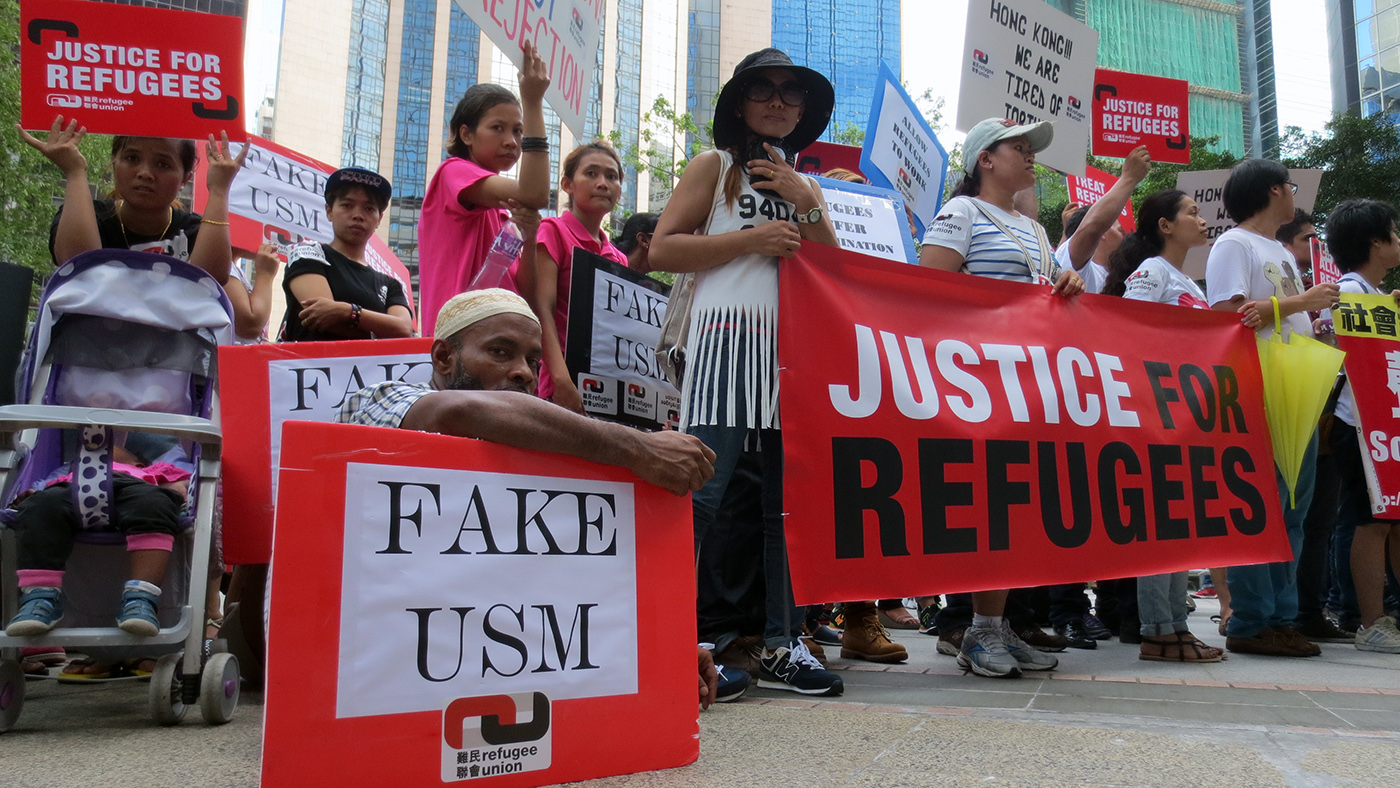
Why haven’t the authorities closed down all the refugee slums?
Jun 26th, 2015 | Housing, VF Opinion, Welfare | Comment
In the New Territories, close to the MTR Light Rail station of Nai Wai, the stench of excrement emanating from a pit toilet in a crowded refugee slum we recently visited was overwhelming. A seasoned reported we accompanied was shocked by the dreadful conditions and gagged at the offensive odor. With extensive experience in India, he noted, “600 million Indians defecate in the open, but this is Hong Kong, an international financial centre, and these shelters are approved by a government contractor and rent is paid with public money, right?”
At times, the torrential rain splashed through the ventilation gaps in an unsound roof hazardously weighed down by discarded material, including several rotting mattresses. A spokesman for the 15 refugees settled in the abandoned pigsty lamented the atrocious conditions, “Where else can we live? 1500$ (in rent assistance) is not enough. My bed is wet from the rain. Last night I slept on a chair with an umbrella. We don’t have toilet … there is a dirty hole in the ground … How people say we come to Hong Kong for a better life?”
The safety, hygiene and sewerage in this slum are manifestly horrendous and a shock to the conscience of any observant visitor. Since Vision First exposed this slum in December 2013, it featured in dozens of media reports, both local and international, but the authorities have failed to close it down and relocate endangered refugees to basic, safe and clean housing.
Vision First queries whether this dump complies with the SWD Invitation to Tender that requires, “The Contractor shall ensure that Service Users … are provided with accommodation, identified … in the private sector (including electricity, water, gas supply and other basic utilities). The Contractor shall … monitor the living condition … conducting spot checks and home visits … to ensure the safety and hygiene condition of the accommodation … and shall handle emergency relocation …”
Several of the 69 refugee slums exposed by Vision First were closed in 2015. In those cases – for reasons that haven’t been made public – caseworkers informed the affected refugees that rent payments would cease from one month to another, thus abruptly terminating questionable arrangements that had previously thrived unchallenged for years. However, interestingly enough, it was not always the worst slums that closed down first. Rather, acceptable or unacceptable documentation might determine the closure or approval of refugee slums.
What leads a supposedly civilized society to abandon human beings in extreme degradation? Academics explain the marginalization and precarization of troublesome and unwanted communities. Scholars articulate the stigmatization and criminalization by the state and other dominant forces of undeserving social rejects for containment and control purposes. A USM appeal judge (name withheld) went as far as harangued a powerless refugee, “Asylum seekers are a problem for Hong Kong. Why you come here? What do you expect, a five star treatment?”
The honourable judge might agree that defecating in open sewers should not comply with acceptable standards. The refugee slums are an affront to the decency of every citizens of Hong Kong. These compounds are the shameful legacy of a failed ‘humanitarian assistance’ that a slum-dwelling refugee rightly described as “treating us like animals.”
Refugees are not unaided indigent persons compelled to find shelter wherever practical. Caseworkers visit their hovels. Housing managers approve their tenancy agreements. Hundreds of millions of dollars are channeled to landlords. Media reports expose housing failures. Lawmakers complain to Legislative Council panels. But regrettably the mockery of human dignity persists unabated.
Do these appalling living conditions and distressing human suffering evince an apparent limit to Vision First’s advocacy against refugee slums subvented by the Social Welfare Department? If so, should other sections of society also step in? It might be argued that anyone who has direct or indirect knowledge of this problem shoulders a fraction of the blame for its continuation.
Ultimately, beyond the recrimination, responsibility and social-legal implication are the men, women and children who suffer deplorable living conditions in the shadow of expensive rural villas. Nowhere else in Hong Kong does the rich-poor divide make a starker contrast! Some witnesses find it hard to sleep at night knowing that fellow human beings are crushed by extreme destitution and society is not doing anything about it.
Does Hong Kong favour fake systems?
Jun 19th, 2015 | Immigration, Rejection, VF Opinion | Comment
Abraham Lincoln is attributed the saying, “You can fool all the people some of the time and some of the people all the time, but you cannot fool all the people all the time.”
According to many refugees who watched a live news-feed at Vision First office, this maxim might apply to the Hong Kong’s 2017 electoral reform. Few are in any doubt about the government’s flagging popularity and the escalating challenges it is likely to face after a pro-establishment walk-out bungled the historical vote: 28 No – 8 Yes.
On offer was pseudo universal suffrage for the 2017 Chief Executive election, when eligible voters were expected to cast ballots for pre-approved candidates.
An African refugee observed, “It’s like in my country. Without rigging the election, the president would never win. It is fake universal suffrage! It is meaningless because voters cannot vote for their own choice, but only vote for whoever the Government will select. Hong Kong people are not stupid! They know it is a fake system promoted to legitimize whoever is put in power.”
A Pakistani refugee exclaimed, “Before, people accepted the governor sent from London, and now, they accept the Chief Executive approved by Beijing. But don’t tell them to vote for him, or to love him. The Government offered fake elections and the people said, ‘No thank you! You choose the leader, not us. So what is the meaning of everyone going out to vote for him?’”
As he assembled a sign for the World Refugee Day demonstration, another refugee remarked, “Hong Kong likes to have fake systems. Like the asylum screening (USM). There are lawyers, officers and appeal judges doing their important work, but the process is fake. Refugees know they cannot win their claims. Just like HK voters know they cannot win the election. You cannot fool all the people all the time!”
Rooted in painfully lived experience, these observation strike a chord. On paper, the Unified Screening Mechanism appears to offer protection, but how often does it grant it? Refugees complete forms, submit documents and attend interviews hoping for positive results. And then they wait, and wait and wait. The government arm is extended, but unreachable. The invisible hand holds back the promises made.
The refugee recognition rate speaks for itself. Since the UN Convention Against Torture (CAT) was extended to Hong Kong in 1992, more than 20,000 asylum seekers lodged claims with the Immigration Department, but only 28 were ever accepted, including several children born in Hong Kong.
That’s a 0.14% acceptance rate, a far cry from the 20-50% in develop countries, see Australia for example.
Can refugees be blamed for lamenting that the screening process lacks credibility? Claimants give less weight to the Immigration Ordinance, 480 duty lawyers and appeal judges, than to protection results, known as ‘substantiated claims’.
For the men and women who fear being repatriated into harm’s way, the complex and sophisticated screening mechanism is judged by its outcome – does it protect? Until results prove otherwise, it is hard to disagree that the Unified Screening Mechanism appears to be less than genuine.

Homeless asylum seeker found dead in Hong Kong streets
Jun 11th, 2015 | Crime, Housing, VF Opinion, Welfare | Comment
An Indonesian refugee was found dead wrapped in a discarded mattress on the streets of Mongkok on 9 June 2015, reported the South China Morning Post on 8 June 2015. This tragedy highlights a general lack of protection for refugees in Hong Kong.
Homelessness is increasingly a problem faced by many asylum seekers who are not only denied sufficient welfare assistance, but are also increasingly made to wait long periods before they can access such assistance. The case of a refugee minor who was homeless for two months was reported by Vision First last week.
In April a fire broke out on a foot bridge in Sham Shui Po where many street-sleepers lived. It is reported that several dozen homeless refugees live in cardboard boxes in the area, exposed to the elements as well as to risks of fire, disease and crime. There is a troubling correlation between severe destitution and criminality – both as perpetrators and victims.
The government claims that refugees, officially branded ‘illegal immigrants’, are a problem for the security of society and therefore must be removed as soon as possible. A question should be raised: are refugees the only ones allegedly posing a threat to society? Isn’t the government endangering the life of people whose prolonged stay in Hong Kong is the responsibility of flawed border controls and a judicially bashed asylum mechanisms?
A Coroner’s Examination ought to be launched into the most recent death to ascertain why and to what effect a refugee woman, who is said to have lodged a claim in 2007, and therefore was in Hong Kong for over eight years, was apparently homeless in Mongkok.
A troubling reality might be presented before our eyes. Does the current assistance fail to offer in-kind assistance “to prevent them [refugees] from becoming destitute”?
Vision First is concerned about the generalizations made by Deputy Director of Social Welfare, Mr. Lam Ka-tai, at a Legco Panel on Welfare Services meeting, following the Hon. Elizabeth Quat’ question, “Are there any (refugee) street-sleepers?”
The Hon. Quat persisted, “Do you know if any of them are street-sleepers? Do you know?” Mr. Lam’s ensuing response came as a surprise, “As far as I know there aren’t any!”
Mr. Lam Ka-tai may perhaps want to examine the 76 article on our website relating to homeless refugees, and discover a reality he might have been concealed from him. This link is provide for his convenience: https://www.vfnow.org/?s=homeless
UPDATE:
http://www.ejinsight.com/20150609-pakistani-wanted-in-the-death-of-indonesian-woman/
http://www.thestandard.com.hk/news_detail.asp?pp_cat=11&art_id=157883&sid=44641693&con_type=1&d_str=20150611&isSearch=1&sear_year=2015
